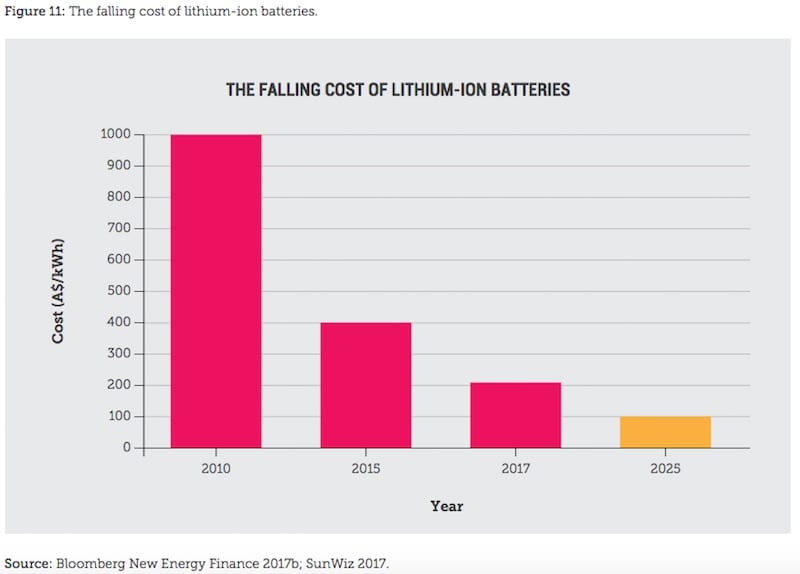 As rooftop solar continues to boom in Australia, a new report suggests household battery storage could soon follow suit, with uptake predicted to have tripled in 2017, and costs of the key technology expected to halve in less than seven years.
As rooftop solar continues to boom in Australia, a new report suggests household battery storage could soon follow suit, with uptake predicted to have tripled in 2017, and costs of the key technology expected to halve in less than seven years.
The report, published by the Climate Council on Thursday, puts estimates on home battery installations for 2017 at more than 20,000, a three-fold increase on 2016 numbers of 6,750 new installations.
The 2017 installations will amount to a combined energy storage capacity of more than 170MWh, the report says – bigger than South Australia’s Tesla-Neoen Big Battery battery.
The impressive increase in uptake, says the report, marks a “love affair” with clean energy and battery storage that is only just beginning for Australian households, as they discover how it can reduce their exposure to expensive grid supplied power even further, when added to their rooftop solar.
The report, titled Fully Charged: Renewables and storage powering Australia, notes that as the relationship between consumers and energy supply changes – a change that is being fast-tracked by soaring prices at the socket – the public’s knowledge of energy storage is also increasing.
It cites its own September 2017 poll that found that 74 per cent of people surveyed across Australia expect household batteries to be commonplace in homes in the next decade.
The key motivation for this uptake of battery storage, according to more than half of respondents, was to further enable their rooftop solar to “reduce power bills.”
As we reported here on One Step Off The Grid on Wednesday, battery storage is also increasingly becoming “the norm” in new-build houses, with major home developers like Metricon, Stockland and Porter Davis offering solar and storage packages among their ranges of off-the plan homes.
The report also notes that home battery uptake will be boosted by network and government-based efforts to use the behind-the-meter energy storage resources to help shift peak to later in the evening or even into the early morning.
This “virtual power plant” effect is something that is currently being tested already in various places across the National Electricity Market, including by AGL Energy in Adelaide, the CSIRO in Brisbane, and most recently – and the biggest example – by Tesla and the SA government, with a 250MW VPP linking 50,000 household solar and battery storage systems.
This VPP effect, says the Climate Council report, “will become significant as battery uptake increases, helping the rest of the grid to manage peak demand well into the evening.”
On costs, the report says that prices for lithium-ion batteries have fallen by 80 per cent since 2010, and are expected to halve again by 2025, putting them on a price trajectory, or “learning rate” not dissimilar to that taken by solar PV (see tables below).
This article was originally published on RenewEconomy’s sister site, One Step Off The Grid, which focuses on customer experience with distributed generation. To sign up to One Step’s free weekly newsletter, please click here.











